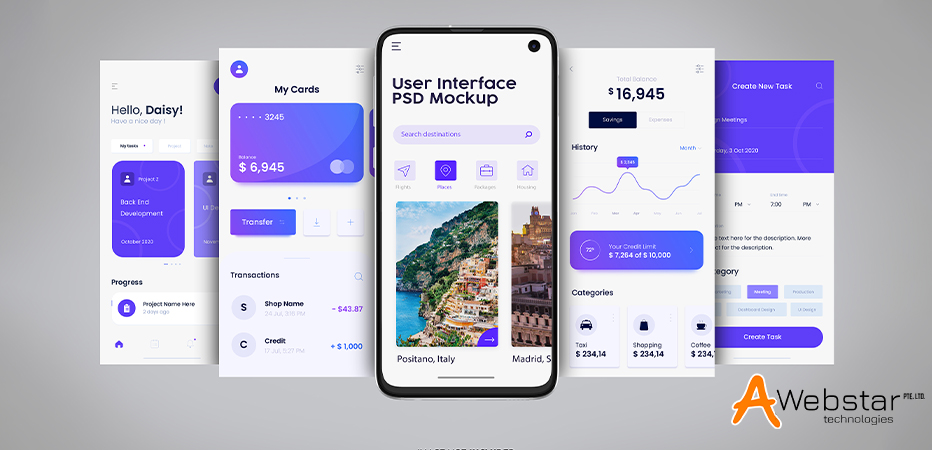
Easy mobile usability is a vital and deciding component in a website’s success. When it comes to thriving mobile applications, the user experience is paramount. The site isn’t only about web design; it also has to provide end-users with a pleasant and smooth experience. Being a business owner, your main aim is to achieve increased conversion rates, more loyal shoppers, and more. Of course, when the users will be able to easily understand and navigate the mobile website then only you can retain them. Luckily, all of these are possible to achieve when you provide users with the expected site performance. Stats says: You can simply say that mobile matters more than anything these days. Hence, following the best UX practices is significant to increase conversions and stay ahead of the competition. So, let us understand what a mobile website design is and how you can improve the user experience on mobile devices. Table of Content A mobile website is created to optimize the experience for users. Mobile websites are not similar to the other sites in several ways. For example, the features and text streamline to make visitors access the information and react to CTAs quickly. Also, the videos, images, and docs that are large-sized are compressed. The reason is mobile screens are small and they come with certain bandwidth limitations on the phones. Each online shopper these days expects the website to load fast and deliver a simplified and easily navigable mobile experience. If not, they can switch to the competitor meeting their expectations. Hence, if you still do not have a mobile-responsive website, implement the elements known to improve the user experience as a whole. Let’s begin!! The ability to search quickly is an important aspect of the mobile user experience. When reading a page or switching to another, a search option is always required. The reason for including this option is that even if the website is well-designed, some pieces may be missing. Let’s say you’re a clothing retailer who sells online. The most important part here would be your website’s search option. After all, the visitors’ experience will improve only if they can find the thing they are seeking quickly and easily. Besides, the experience related to search also necessitates ensuring that internal search results pages are appealing and responsive. Also, the search results must be relevant and organized no matter which device the user uses. The days of multi-tiered navigation menus are no longer fashionable. They necessitate too much effort and, as a result, have greater bounce rates. Due to the restricted area on mobile phones, consumers must find what they are looking for without having to wait for the site to load. The mobile menu usually works well in category, segment, and sequential formats. This enables users to navigate to the appropriate landing page. Other practices you can count on include: All these aspects will make navigation simple and direct users to call-to-actions (CTAs) and raise conversion rates. The aesthetic of a mobile website design can be made or broken by font sizes. The font style isn’t the only factor to consider. Font size has a huge impact as well. Of course, the desktop font sizes won’t work with the limited mobile screen displays. It can create a mess and the size differences will be visible. Even the mobile-friendliness tests by Google asks the font sizes to be in order. These are the reasons why you need to invest in limited font size types. Pop-ups are disliked by most people, whether they are browsing on huge screens or on mobile devices. These operate as stumbling blocks to information accessibility. User involvement with content is vital, to put it simply. It’s essential to have a website that encourages participation. Talking about the pop-ups on mobile devices, they make the design and site appearance even worse. They make it hard to access the information and enable the users to make certain actions. Thus, delivering users a negative experience. As a result, it is usually preferable to use banner ads. This makes it easier to make the message visible and in front of the user without interfering with their search for information. Conversion rates are unquestionably influenced by long page loading times. Users would not like having to wait long to learn about your products and services and make a purchasing decision. Mobile access relies on a variety of components, including software, hardware, and other elements. As a result, everyone’s load time will be different. According to the study, if a mobile site takes longer than 3 seconds to load, 53% of users will quit it. As a result, website speed optimizing becomes necessary to ensure that users do not abandon the site due to the slowness. How to do so? Upload Small-Sized Images: Several approaches allow larger images to be served on desktops while remaining small on mobile devices. This can be beneficial in terms of reducing the time it takes for a website to load on a mobile device. However, whenever making modifications, testing is vital. Also, you can utilize PageSpeed Insights by Google. It better helps in executing an audit and recognizing the improvement needs. Of course, the small screen of mobile devices limits the amount of space available for browsing. As a result, the only priority left is to optimize the site for better speed. It’s vital to limit the content to displays in this case. After all, no one these days has the patience to wait for large pages to load with plenty of information to read. Therefore, strategically arrange the content alongside successful CTAs. Furthermore, keep the call-to-action visible and easy to find. Additional Tips for Maintaining Website Loading Times: Remote user testing is the best way to check that mobile usability is up to par. This allows remote consumers to provide feedback after they have used the website. After that, the skilled developers of the web design company will undertake quality assurance and address any flaws. In basic terms, user testing is necessary to see what users experienced after using the website and make the necessary actions. To summarize, the digital era is always evolving, and consumers just demand a pleasant and convenient mobile experience. Remember that if you’re failing to optimize the mobile site for better performance and user experience, you’ll lose on sales and conversions. Therefore, a mobile-friendly website design will make you earn more customers and increase brand loyalty. Simply count on these tips: At Awebstar, we build high-quality and responsive websites that provide a unified and exceptional user experience. Our expert website designers develop engaging and responsive sites for your business that generate revenue, traffic, and leads. 
Overview of Mobile Website
Effective Strategies to Improve Mobile User Experience
Ensure Availability of Search Bar and Accessible Menu
Streamline Mobile Navigation
Keep the Font Sizes Minimum
Banner Ads Are Better Than Pop-Ups
Build Mobile Website Design for Speed
Keep the Image Concise and Responsive

Testing the Website is Essential
Summing Up